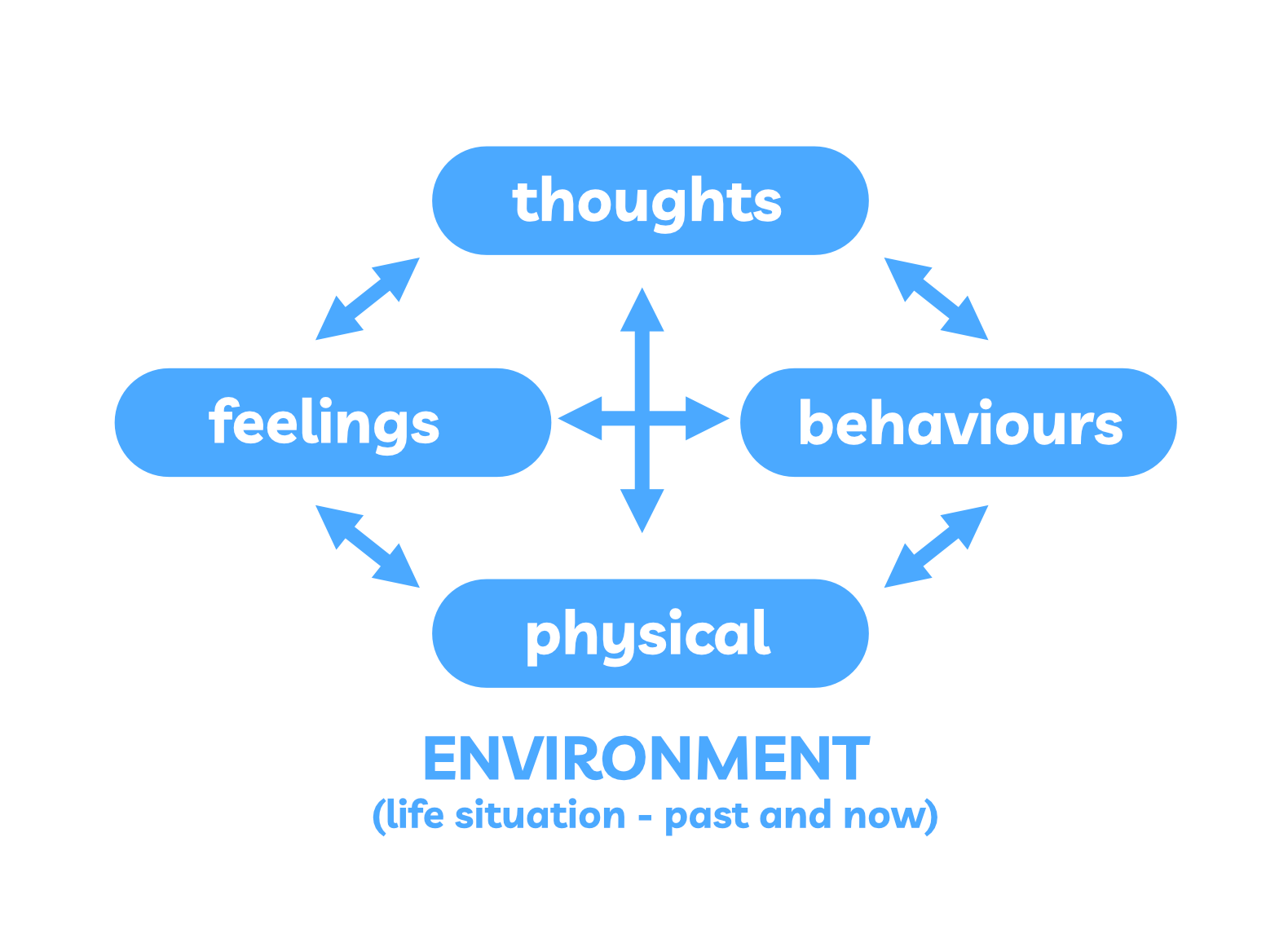Physical
Physical symptoms or changes noticed in the body, like tiredness, pain, loss of appetite, a disease-specific symptom, breathlessness, cough, diarrhoea.
Moods
Moods, emotions or feelings and are described usually in one word, for example, sad, happy, glad, cross, worried.
Thoughts
Thinking in words, images or pictures, memories and beliefs (rules) about self, other people, the world outside the self and the future in our minds.
Behaviours
Behaviours can also be called actions, so what you do more of, do less of, or stop doing.
Environment
Your environment (or your present/past life situation which you live each day) includes relationships, family, community, religious/cultural background, workplace, hobbies, health care services and staff, housing.
Each of these five areas is interconnected and they affect each other. Using the five areas model can help to make sense of overwhelming problems by breaking them down into smaller parts.
For example, your thoughts about a certain situation can often affect how you feel both physically and emotionally, as well as how you act in response.
